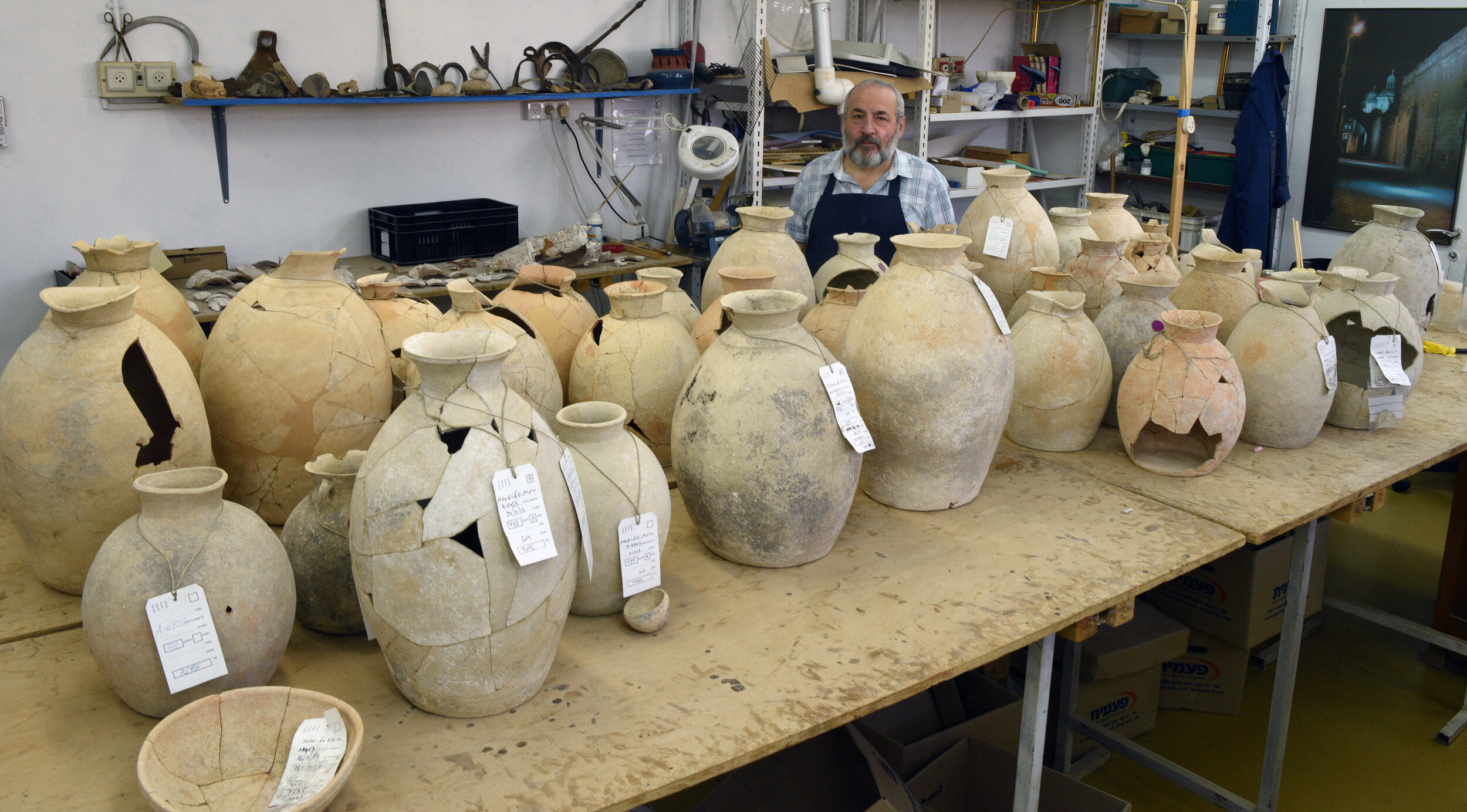The Julia and Henry Koschitzky Center for the Conservation of Ancient Pottery will occupy more than 2,500 sq. feet in the Jay and Jeanie Schottenstein National Campus for the Archaeology of Israel.
Photo: Clara Amit, Courtesy of the Israel Antiquities Authority
Five conservation experts are responsible for treating all pottery finds from Israel Antiquities Authority excavations and from excavations in Israel conducted by local and foreign universities. Finds include jars, cup-bowls, kraters, bottles, ossuaries, churns, figurines, lamps, handles with seal impressions, ostracons, jugs, amphoras, sigillatas, pithoi, plates and more, dating from Pottery Neolithic (5,500 BCE) to the Late Islamic Period (16th century CE).
Pottery fragments are among the most common finds in archaeological excavations and provide important information on dating, trade, technological achievements, population movements, as well as on wars and conquests. Carefully recorded, drawn and photographed on site, the excavated vessels and fragments undergo preliminary sorting in the field in order to determine the importance of each fragment or vessel and the need for further treatment. Pottery finds are then sent to the laboratories still covered with layers of sand, mud and dirt. There they will be cleaned and restored, and later drawn, photographed and catalogued.
The goals for the Ancient Pottery Conservation Laboratories in the National Campus are multi-fold and include, although are not limited to, the following:
Conservation and long term preservation of the pottery and ceramic collection of the National Treasures.
Providing a rich, informative visitor experience to access, see and understand the conservation and preservation of the National Treasures.
Act as learning and practice centers for the education of future generations of conservators and restorers.
The Conservation Process of Ancient Pottery objects
At the end of an archaeological excavation, all finds are brought to the pottery conservation laboratories for treatment. The conservator lays the pottery sherds and fragments on the designated long tables in consultation with the excavator, while attempting to reconstruct the way they were discovered in the ground. Usually, only objects containing an identifiable rim will be restored, since the shape of the rim determines the type of vessel and its date. During the initial sorting of the material from the excavation, the conservator cleans and sorts the thousands of pottery sherds into groups of specific vessels according to their color, creating piles of sherds which will later be attached and glued to create a standalone pottery vessel. Missing parts will sometimes be reconstructed using Plaster of Paris which is clearly identifiable.
Photo: Clara Amit, Courtesy of the Israel Antiquities Authority
Conservation in the laboratories of the Israel Antiquities Authority is performed according to accepted international conservation guidelines, using specially approved materials that have passed specific testing. The rule of thumb guiding all conservation efforts by the Israel Antiquities Authority is: the less intervention the better. Emphasis is placed on using environmental conservation techniques, namely conservation through climatic conditions - regulating humidity and temperature to keep the integrity of the vessels and slow the deterioration process.
The Ancient Pottery Collection in the National Treasures of the Israel Antiquities Authority
Photo: Clara Amit, Courtesy of the Israel Antiquities Authority
Pottery can easily endure the environmental destructive forces such as humidity, salts and oxygen. Therefore, the erosion process affects pottery less than other materials, making pottery objects the most common finds in every archaeological excavation. Because pottery typology is a major factor in determining chronological sequences, and Israel remains the most heavily excavated country in the world with a well developed ceramic corpus, the pottery collection has significant impact on archaeological and historical studies throughout the Levant.
The collection of more than 55,000 complete objects is exceptional since all of the objects housed, displayed and treated in the laboratories are found in excavations in Israel and are recorded in their archaeological context, offering us a wealth of information which otherwise would have been lost.
The pottery of the Land of Israel significantly impacts historical studies throughout the Levant. Pottery and ceramic types change over the years and can be grouped chronologically for dating purposes. In addition to chronology, pottery vessels and remains can contribute greatly to our understanding of shifts in settlement type and distribution; continuity and change in local cultures; the degree of isolation or contact with other cultures; the level of technology, social structure, and adaptation to the environment and trade; and, not least, shared aesthetic and religious traditions.




